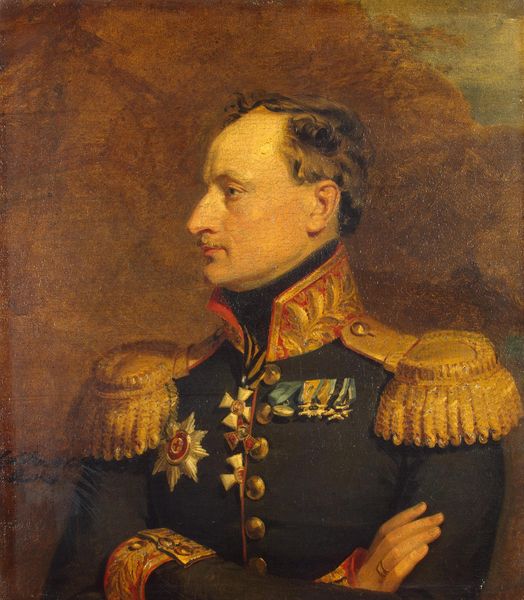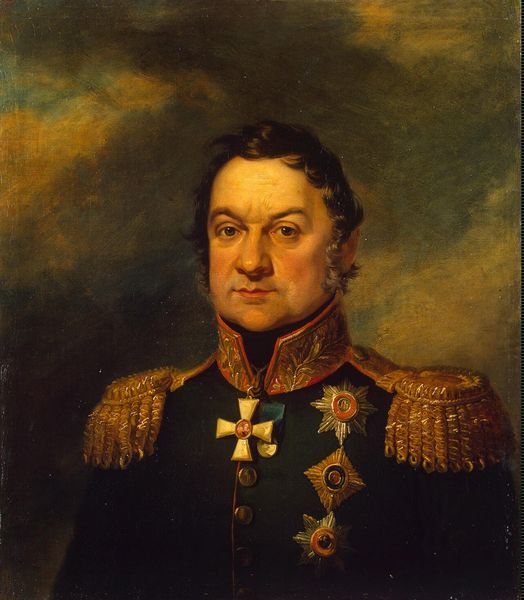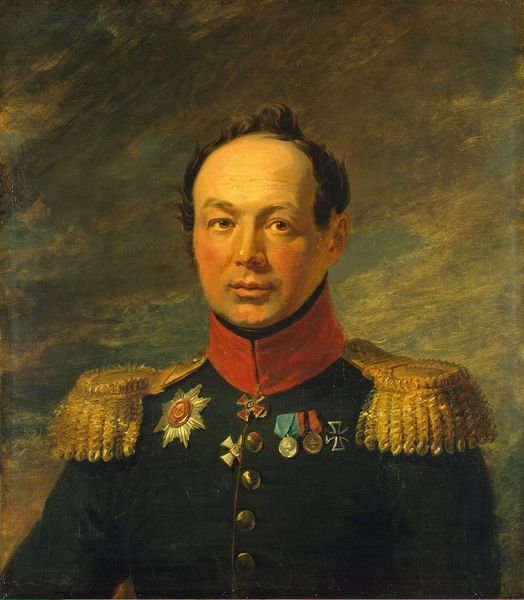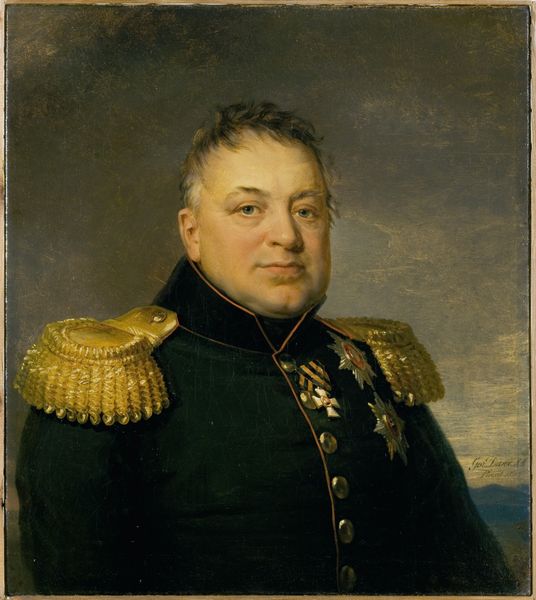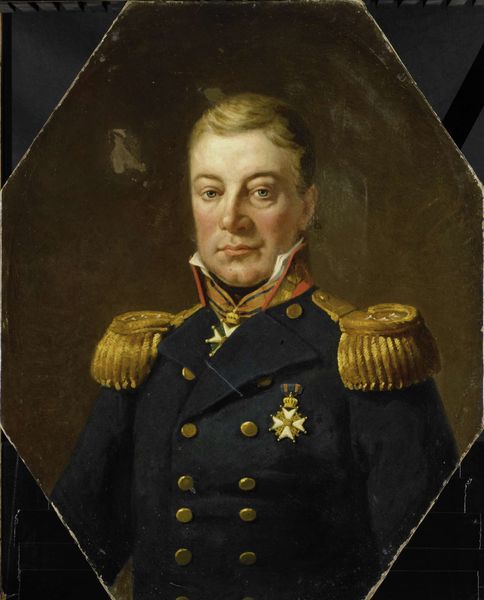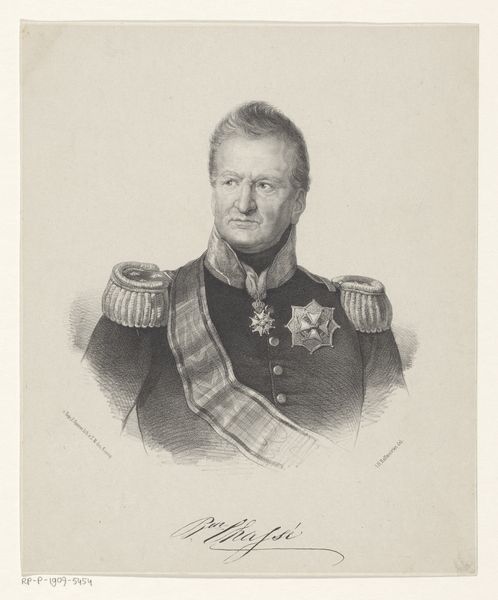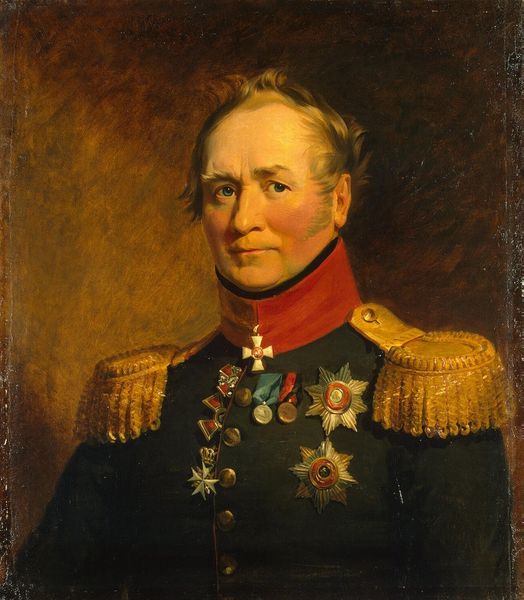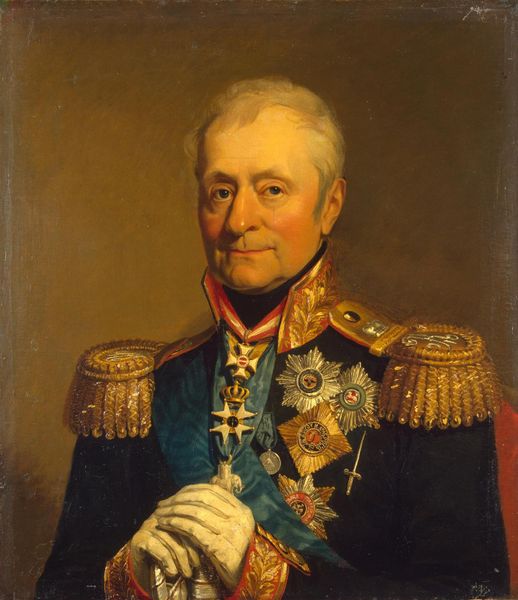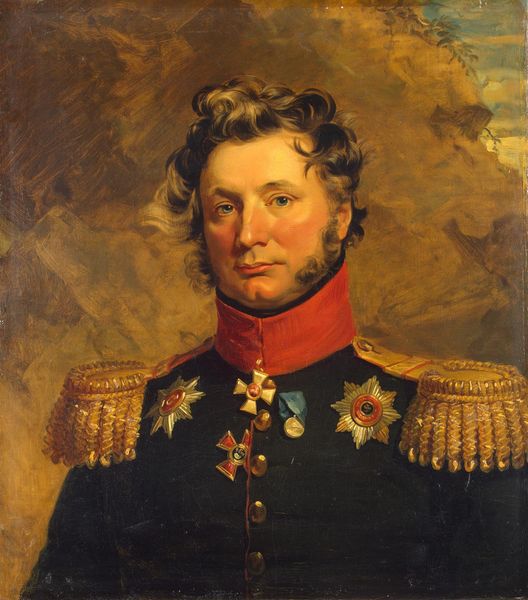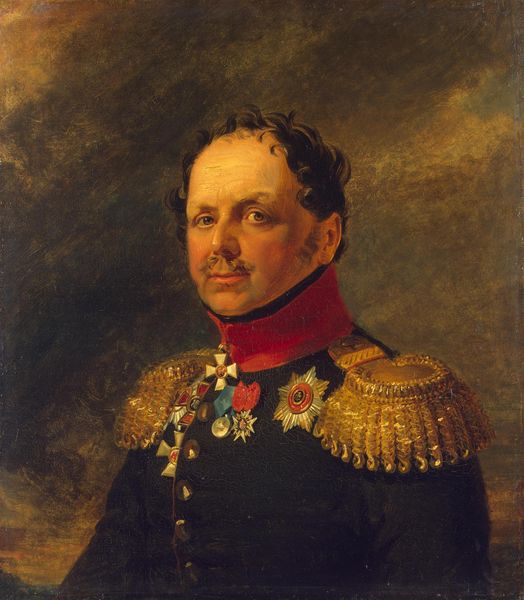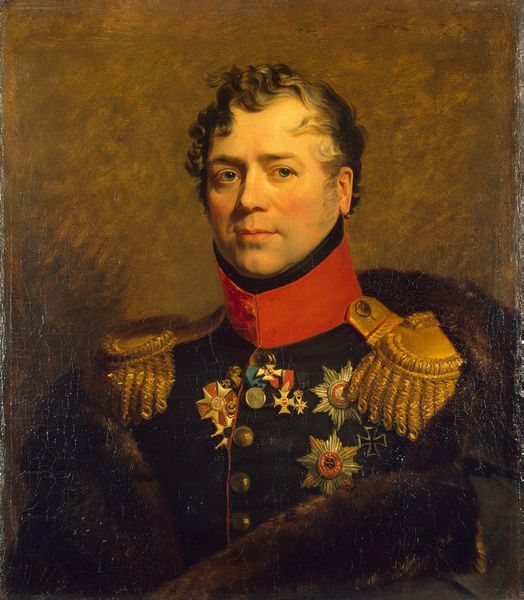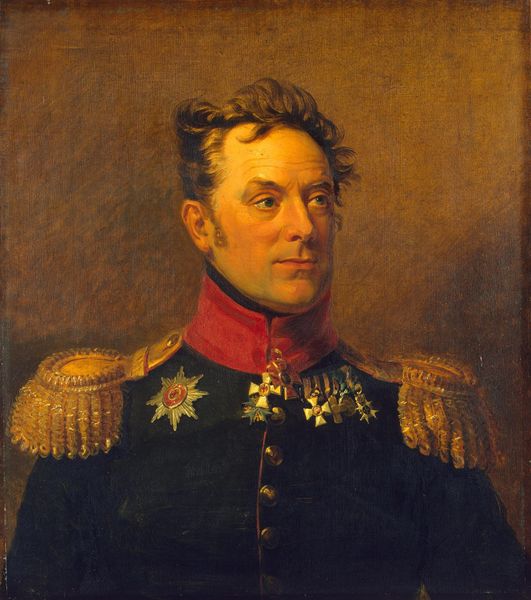
oil-paint
#
portrait
#
oil-paint
#
romanticism
#
genre-painting
#
history-painting
#
academic-art
Dimensions: height 98 cm, width 79 cm
Copyright: Rijks Museum: Open Domain
Curator: I'm immediately struck by the sternness. Look at that gaze, the way he's folded his arms, there’s definitely an aura of authority surrounding this imposing figure. Editor: Indeed. This is a portrait of Lieutenant-General Baron David Hendrik Chassé, rendered in oil on canvas by Jan Willem Pieneman in 1832. The work currently resides here at the Rijksmuseum. Pieneman was known for history paintings, but was especially popular for his portraits of prominent figures. Curator: The composition, while typical of formal portraiture, amplifies that sense of control, doesn’t it? He’s presented almost monolithically. His look gives him that stoic appearance which, I assume, makes a symbolic claim. Editor: I think so. It reflects the values placed on military leaders at the time, emphasizing stability and command during a period of significant European political restructuring. He certainly made an impression when he was defending Antwerp against the Belgian rebels in 1832. And remember that in 1832, it had only been seventeen years since Waterloo, and 17 years is really no time at all when dealing with shifting public attitudes toward martial conflict, right? Curator: Right, it’s impossible to consider him separate from the era's anxieties, fears and triumphs. Even those small details, the Order of the Netherlands Lion prominently displayed— it underscores service and allegiance to the nation, not just to a monarch. That medallion carries the symbolic weight of duty and valor far beyond mere decoration. Editor: It does serve as an outward signifier for the honors he had gained, but, moreover, such public honors had an immense political meaning. Curator: Absolutely, it’s not simply about capturing a likeness but embedding him in a historical narrative. Each visible decoration acts as a shorthand for his accomplishments, but also the social values upheld by those honors. Editor: Very insightful! Understanding such cultural artifacts definitely help unlock more layers to historical context! I do not disagree that those honours signified some personal triumphs for this military personnel, but his significance at the time was surely beyond that. Curator: Well, looking closer reveals how the material rendering itself—the handling of light on those elaborate epaulettes, and the controlled palette—supports the message. Pieneman used visual cues strategically, and I’ve found myself considering their effect long after the first impression of severity. Editor: Exactly. These symbols work with his face to make the case. Well, I suppose it’s just about all we have time to discuss. What a fascinating glimpse into history through portraiture! Curator: Indeed, reflecting on such artworks reminds us of the multiple narratives woven within. It’s more than a painted image, it’s a record of cultural priorities, social roles, and perhaps even subconscious projections.
Comments
No comments
Be the first to comment and join the conversation on the ultimate creative platform.
